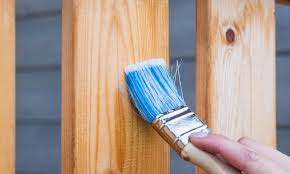Painting your house is one of the most effective ways to refresh its exterior. It boosts curb appeal and protects your property from the elements. However, timing is crucial when it comes to achieving the best results. This is especially true in Arizona, where the weather can vary dramatically throughout the year. Understanding the optimal time for house painting Arizona is essential. It guarantees that the paint sticks well, remains durable, and appears at its best.
The Ideal Climate for House Painting Arizona
Generally, Arizona experiences three main weather patterns:
Summer: Characterized by scorching heat, with temperatures often exceeding 100°F. The intense sun can cause paint to dry too quickly. This quick drying leads to uneven application and potential cracking.
Winter: Winters in Arizona are mild, with temperatures ranging from the mid-40s to mid-70s°F. However, nighttime temperatures can drop significantly, affecting the paint’s ability to cure properly.
Monsoon Season: From July to September, the monsoon season brings heavy rains, high humidity, and thunderstorms, which can disrupt outdoor painting projects.
Given these conditions, timing your painting project correctly is critical to achieving the best results.
Spring: The Ideal Season for Painting Your House in Arizona
Spring is widely regarded as the best time for painting your Arizona house. During this season, temperatures are moderate, typically ranging between 60°F and 85°F. These temperatures are ideal for both painting and drying. Additionally, humidity levels are generally low, reducing the risk of moisture-related issues like bubbling or peeling.
Advantages of Spring Painting:
Optimal Temperatures: The mild spring temperatures allow the paint to dry at a steady rate, ensuring a smooth, even finish. Paint adheres better to surfaces in these conditions, leading to longer-lasting results.
Low Humidity: Arizona’s spring weather is typically dry, reducing the likelihood of moisture becoming trapped beneath the paint. This helps prevent issues like blistering and peeling, which can occur if the paint doesn’t cure properly.
Less Intense Sunlight: While Arizona is known for its sunny days, the spring sun is less intense than the summer sun. This reduces the risk of the paint drying too quickly, which can lead to uneven coats and visible brush marks.
Fall: A Second Window of Opportunity
If you missed the spring painting window, fall is your next best option for house painting in Arizona. Like spring, fall offers moderate temperatures and low humidity, making it an excellent time for exterior painting in Arizona. From late September to early November, the weather is generally stable, providing ideal conditions for painting.
Advantages of Fall Painting:
Consistent Weather: Fall in Arizona is known for its consistent, pleasant weather. This stability reduces the likelihood of weather-related disruptions to your painting project.
Extended Working Hours: The cooler temperatures of fall allow for longer working hours. This gives you more time each day to complete your painting project without the heat-related fatigue that often accompanies summer work.
Preparation for Winter: Painting in the fall helps protect your home’s exterior from the upcoming winter weather. A new layer of paint serves as a shield against moisture and temperature fluctuations. These fluctuations can cause damage over time.
Summer: Proceed with Caution
While summer is not the ideal time for house painting Arizona, it’s not entirely out of the question. However, the extreme heat and intense sunlight require extra precautions. These precautions ensure the paint doesn’t dry too quickly or fail to adhere correctly.
Tips for Summer Painting:
Paint Early or Late: If you must paint in the summer, aim to start early in the morning or later in the evening when temperatures are more relaxed. Refrain from painting during the hottest part of the day. Intense heat can push the paint to dry too fast, leading to an uneven finish.
Use Heat-Resistant Paint: Consider using paints specifically formulated for high temperatures. These products are built to endure high temperatures. They resist fading, cracking, or blistering.
Stay Hydrated: Summer painting can be physically demanding due to the high temperatures. Make sure that you and your team maintain proper hydration. Take frequent breaks to avoid heat exhaustion.
Winter: A Risky Endeavor
Lastly, winter in Arizona presents its own set of challenges for house painting. While daytime temperatures can be mild, nighttime temperatures often drop, which can interfere with the paint’s curing process. If you decide to paint during the winter, recognize the risks and take measures to minimize them.
Considerations for Winter Painting:
Monitor Temperatures: Pay close attention to the weather forecast, especially the overnight lows. Most paints require temperatures to stay above 50°F for proper curing. Avoid painting if cold nights are expected.
Choose the Right Paint: Select paints that are formulated for cooler weather. These paints are designed to cure properly even when temperatures are lower than ideal.
Use Caution with Timing: If possible, limit your painting to the warmest part of the day. This allows the paint ample time to dry before the temperatures drop in the evening. Visit here for a related post!
Conclusion
In summary, timing is crucial when planning a house painting Arizona. While spring and fall offer the most favorable conditions, each season has its own set of challenges and considerations. By understanding the impact of Arizona’s unique climate on your painting project, you can choose the optimal time to refresh your home’s exterior and achieve long-lasting, beautiful results. Contact Truly Painting & More for professional painting services in Arizona.









Leave a Reply
View Comments